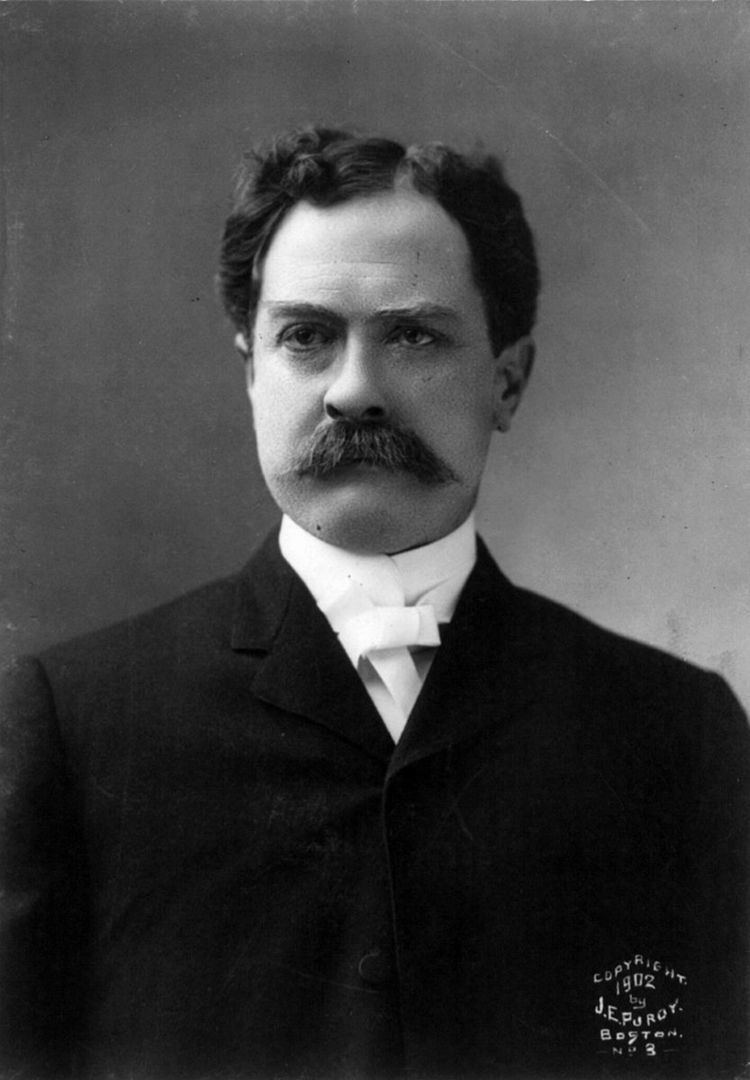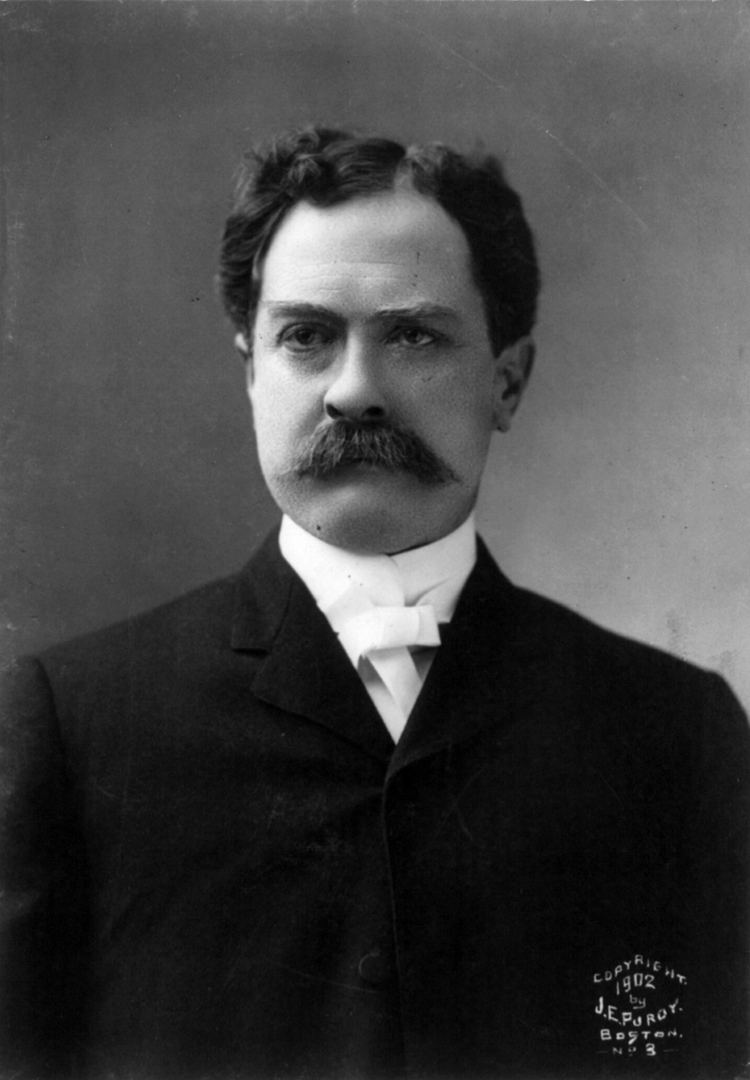Party Democratic Party Education Webb School | Role Political figure Succeeded by Robert L. Taylor Name Edward Carmack | |
 | ||
Died November 9, 1908, Nashville, Tennessee, United States | ||
Succeeded by Malcolm R. Patterson | ||
Edward Ward Carmack (November 5, 1858 – November 9, 1908) was an attorney, newspaperman, and political figure who served as a U.S. Senator from Tennessee from 1901 to 1907.
Contents

Following his political service, and after an unsuccessful run for Governor of Tennessee, he became editor of the one-year-old Nashville Tennessean. He was shot to death on November 9, 1908 over a feud precipitated by his editorial comments in the paper.
Early life
Carmack was born in Sumner County, Tennessee. He attended The Webb School, then at Culleoka, Tennessee. He studied law and was admitted to the bar in 1878 and began practicing in Columbia, Tennessee. He served as Columbia city attorney in 1881, and was elected to the Tennessee House of Representatives in 1884.
Carmack joined the staff of the Nashville Democrat in 1889, later becoming editor-in-chief of the Nashville American when the two papers merged. He later (1892) served as editor of the Memphis Commercial, now The Commercial Appeal.
Relationship with Ida B. Wells
Throughout his career, Carmack was known to use his newspapers to attack rivals. During Carmack's tenure with the Appeal, his editorials began an interesting dialogue with another famous Tennessee journalist, Ida B. Wells. Wells, known as the "Mother of the Civil Rights Movement", was also not one to withhold her opinions and spoke out about the plight of African-Americans in Post-Reconstruction era in the South. Memphis in the 1890s was a hotbed of racial tension, and lynching crimes were commonplace. Wells launched an anti-lynching campaign in her newspaper, the Free Speech.
The Free Speech received national attention in 1892 for its coverage of the so-called Curve Riot. Not a riot at all, the Curve Riot was an attack on the People's Grocery Store by a group of undercover police serving a warrant on the black-owned business. Will Barret, the store's white competitor, had convinced a local court that the People's Grocery was a nuisance. The court ordered the owners arrested. Fearing an attack, supporters of the People's Grocery armed themselves to defend the store. In the ensuing melee, three deputies were wounded. Crying "race riot," other armed whites joined the police and captured over thirty African-Americans, including three of the store's owners: Tom Moss, Calvin McDowell, and Will Stewart. A mob later seized the three from the jail and lynched them. Wells wrote passionately of the atrocity and advised her readers to abandon Memphis and move to the western territories. Many followed her advice. Carmack demanded retaliation against "the black wench" for her denunciation of the lynchings. As a result, the offices of the Free Speech were demolished. Fortunately, Wells was out of town when the attack occurred. She did not return to the South for another thirty years.
Political career
Carmack was elected to the United States House of Representatives in 1896, and served two terms in that body, March 4, 1897 – March 3, 1901. He was then elected to the U.S. Senate by the Tennessee General Assembly, serving one term in that body, March 4, 1901 – March 3, 1907. Carmack served on the Lodge Committee investigating war crimes in the Philippine-American War.
Carmack failed to secure reelection to a second Senate term, being succeeded by former governor of Tennessee Robert Love Taylor, and returned to the practice of law. He then contended for the 1908 Democratic nomination for governor; when this proved to be unsuccessful as well, he then returned to editing the Nashville American.
Death and legacy
On November 9, 1908, he was shot down on the streets of Nashville over something he had said in his newspaper (by now the then-new Nashville Tennessean) regarding publishing and political rival Duncan Brown Cooper which had prompted a feud.
Perhaps in large measure because of the spectacular and violent nature of his death, a large bronze statue of Carmack was erected on the grounds of the Tennessee State Capitol building. The bronze statue was designed by Nancy Cox-McCormack in 1924 (dedicated in 1927), and engraved with several quotes from Carmack on its surroundings and pedestal.
Carmack's remains were returned to Columbia, and he was buried in Rose Hill Cemetery there.
There is a continued effort by Nashville attorney and professor Lewis Laska to have the statue of Edward Carmack removed from outside the Tennessee State Capitol.
For many years the public library on Hartsville Pike (Hwy 25E) in Gallatin, Tennessee was named in his honor. A new public library was opened in 2008 in downtown Gallatin and local authorities decided not to use his name.
